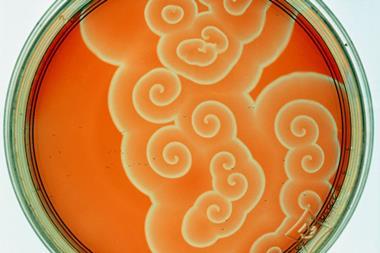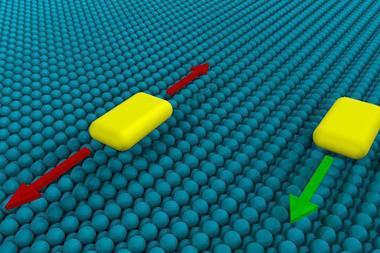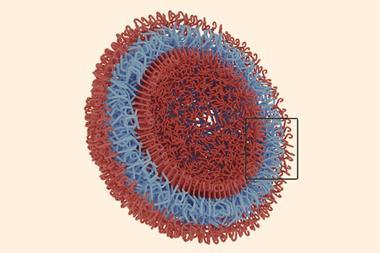
After working together for over two decades on photomechanical crystals, chemists in the US and Saudi Arabia have built molecular crystal motors that are completely powered by light. When exposed to light, these tiny machines perform coordinated movements and exhibit the unique ability to sustain continuous motion through a feedback loop.
With further development, the researchers suggest that their devices might be used in drug delivery. Some experts in the field not involved in the study also suggest that these molecular crystal motors could have applications for microfluidics, such as angling tiny droplets and moving them between reaction compartments.
The work, led by at King Saud bin Abdulaziz University for Health Sciences’ Rabih Al-Kaysi and the University of California, Riverside’s Christopher Bardeen, was presented at the spring meeting of the American Chemical Society on 19 March.
The starting point for these molecular crystal motors was a library of light absorbent anthracene molecules that the researchers synthesised, which were able to demonstrate non-stop back-and-forth movement, also known as continuous photoisomerisation, on exposure to light.
There are three moieties to the motor – an anthracene, a carbon–carbon double bond and a customisable ‘headgroup’ that determines the molecule’s crystal packing structure, shape and behaviour. When the motor is illuminated the anthracene absorbs light and transmits the energy to the double bond that then acts as the molecule’s axle, with the headgroup moving relative to the anthacene.
The carbon–carbon double bond in each molecule allows the motor to twist around this axis when it absorbs light energy, which forces the neighbouring molecules to shift in response, creating something that resembles a dance. When a molecule changes its geometry, it produces a small amount of undetectable work, Al-Kaysi says. By arranging billions of these molecules in an orderly manner within a crystal, the researchers were able to amplify the work, causing the entire crystal to move.
After they are synthesised, the molecular motors eventually self-assemble into larger shapes, such as rods and wires. In certain cases, these structures reorganise into even more complex shapes that can be seen with the naked eye.
These motors display intricate and continuous 3D motion, and that movement can be tuned by adjusting light intensity and wavelength. ‘Through clever organic synthesis, crystal engineering and unique crystallisation methods, we were able to create crystals capable of bending, twisting and moving continuously without needing to be reset,’ Al-Kaysi tells Chemistry World. The researchers are still trying to determine how the molecules coordinate this behaviour over the entire motor.
The work represents a significant advance over previous systems that required multiple steps to activate microscale motion, according to experts like Charlie McTernan, who investigates biomedical applications of molecular machines at King’s College London. ‘Using micro-scale motion to direct and control flow in microfluidics systems may provide new ways to create complex lipid nanoparticles, such as those used in mRNA vaccines,’ he says.
Dean Astumian, an expert in molecular machines at the University of Maine who was not involved in the research, is also enthusiastic. ‘The idea of shining light on a system to get directional macroscopic movement is very intriguing and of potential technological importance,’ says Astumian, who was part of an international team several years ago that created a molecular machine capable of pumping rings to produce polyrotaxanes.
‘Drug delivery seems a reasonable possible application since light pipes can be inserted into veins relatively easily and can in principle be used to guide micro-scale “nanobots” to specific regions in the body where they can deliver their nano-scale (molecular) cargo,’ Astumian adds.
For Astumian, there are some lingering questions though. ‘I visualise a long ribbon-like structure caused to undulate and hence propel directed motion. What I don’t see at first is what governs the directionality,’ he says. ‘Often understanding this symmetry-breaking element is key to opening up design possibilities for further research.’
Giulio Ragazzon, a chemist at the University of Strasbourg in France whose research focuses on molecular machines, self-assembling systems and nanomaterials, agrees that this is an exciting development. ‘Molecular crystals that can sustain oscillations when exposed to light are rare and the mechanism at the basis of their operation have not been fully untangled yet,’ he says. ‘Having robust systems that can show this behaviour is very helpful to understand how such autonomous systems can be engineered – the road to practical applications is long, but the present system is likely a significant step forward.’

















No comments yet